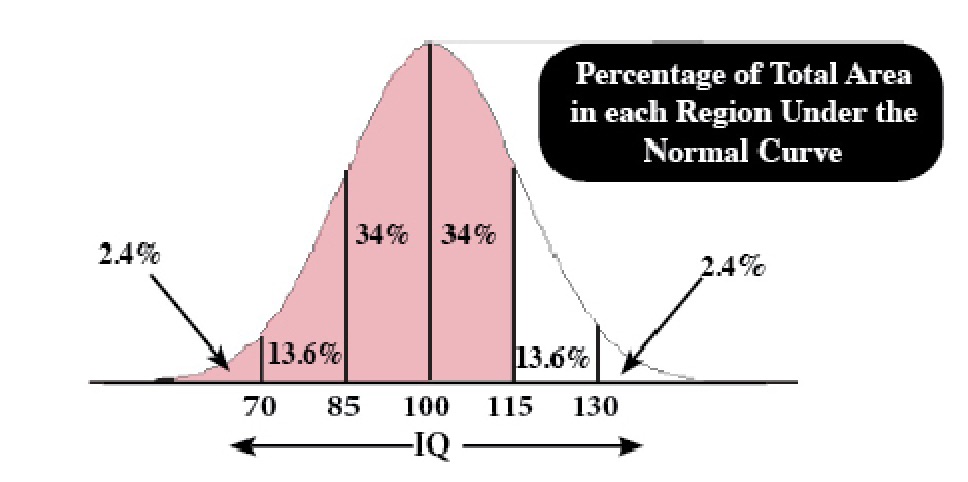In a nutshell, your IQ is a measure of your performance on a series of “intelligence” tests relative to other people your age. I’ll take you briefly through the development of these tests and their interpretation. For a deeper history of the evolution of IQ, visit: https://www.intelligence-and-iq.com/how-did-iq-measurements-evolve-over-time/
In 1955, American psychologist David Wechsler published an intelligence test for adults that became known as the Wechsler Adult Intelligence Scale (WAIS). Defining intelligence as “the global capacity of a person to act purposefully, to think rationally, and to deal effectively with his environment,” he created two sub-tests–one measuring “verbal intelligence” and the other, “non-verbal (performance) intelligence”. Wechsler made the assumption that intelligence is normally distributed, i.e., has a bell-curve distribution throughout the population, and mapped his test scale onto a normal distribution with mean 100 and standard deviation 15. By standardizing his tests in this way, he linked his scale directly to percentiles, allowing for immediate comparisons to average intelligence. A person with an IQ of 100 would be in the 50th percentile, meaning that she scored higher than 50% of adults in her age range who took the test. This definition of IQ was age independent since all adults were believed to have reached full brain development. The correspondence between IQ and percentile ranking is displayed in the figure below.
The Percentiles Corresponding to IQ

For example, the area of the shaded region left of IQ 115 is 84% (i.e., 50% + 34%) of the total area under the curve. So, someone with an IQ of 115 scored higher than 84% of the population and ranks in the 84th percentile. This is called the percentile ranking. The table below gives the percentiles that match familiar IQs.

Wechsler’s recognition that intelligence may have more than one dimension had prompted him to depart from a single measure of intelligence offered by the original Binet tests and the Stanford-Binet test. Subsequent revisions of the Wechsler tests included measures of verbal comprehension, perceptional reasoning, working memory, and processing speed. WAIS-IV now has 10 subtests and 5 supplemental tests that summarize intelligence with two measures–a final IQ score and a General Ability Index.
IQ is not an absolute measure of intelligence, but rather measure relative to the rest of the human population. IQ tests are normed so that IQ scores are distributed on a normal curve with mean 100 and standard deviation is 15 (Wechsler) or 16 (Stanford-Binet). Someone with IQ of 200 is at the 99.999999987th percentile. This means that (for the Weschler test) only about 1 out of 76 billion people, would score higher. Since the world population is less than 10 billion, the concept of IQ has no meaning at or above 200. At the time of this writing the world population is less than 8 billion, so IQ as measured on Weschler has no meaning above 195. Similarly, the IQ as measured on the Stanford-Binet has no meaning above 202. The concept of IQ is a reasonable estimate of intelligence only in the range between 70 and 130, above that it is less clear how to compare IQ’s except to say that the people are highly intelligent.
